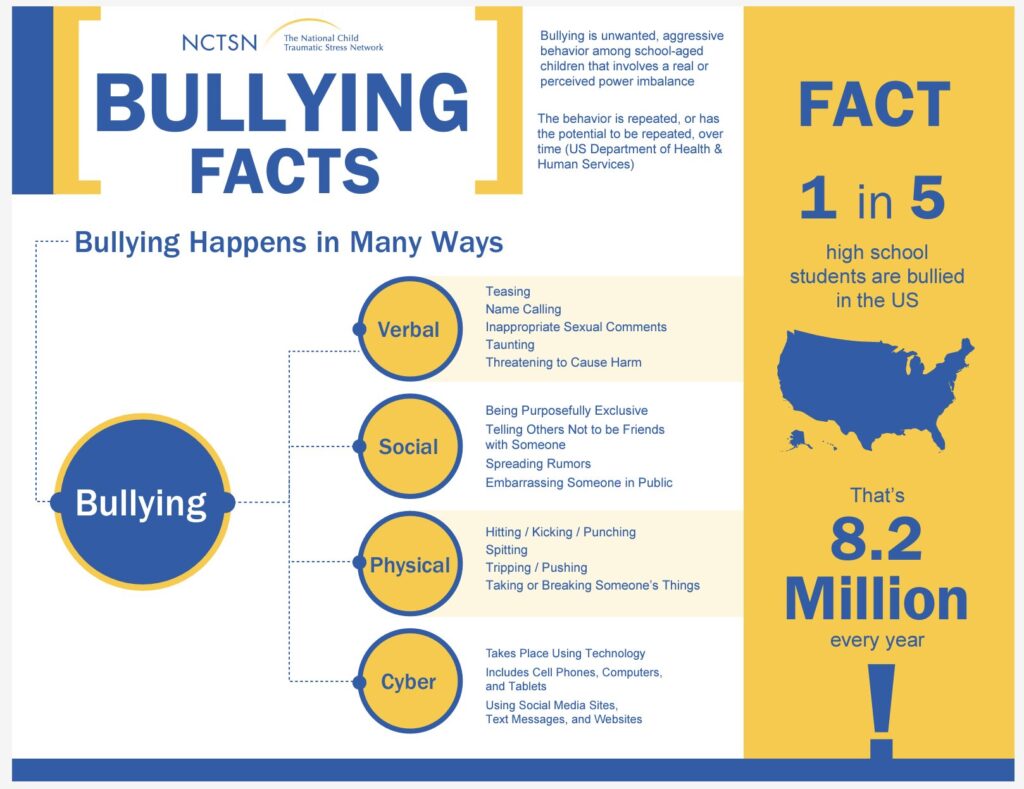
Middle school is a pivotal stage in a child’s life, marked by significant physical, emotional, and social changes. While this period can be exciting and full of opportunities for growth, it can also be challenging, particularly when it comes to navigating complex social dynamics. One of the most pressing issues facing middle schoolers today is bullying, which can have devastating consequences on victims’ mental health, academic performance, and overall well-being.
This article aims to delve into the multifaceted issue of why are middle schoolers so mean, exploring the underlying causes of bullying behavior in this age group. We will examine the role of social development, hormonal changes, and brain development in shaping middle schoolers’ actions. Furthermore, we will discuss practical solutions that parents, educators, and students themselves can implement to create a more positive and supportive middle school environment.
Middle School Bullying
Bullying is a pervasive problem that affects millions of children worldwide. It involves repeated acts of aggression, intimidation, or humiliation directed towards another individual, often by someone perceived as having more power or influence. In the context of middle school, bullying can manifest in various forms, including physical violence, verbal abuse, social exclusion, cyberbullying, and extortion.
The consequences of bullying can be severe and long-lasting for victims. They may experience anxiety, depression, low self-esteem, sleep disturbances, academic difficulties, and even suicidal thoughts. Bullies themselves are also at increased risk for negative outcomes, such as substance abuse, criminal behavior, and mental health problems. Addressing this issue requires a comprehensive approach that involves understanding the root causes of bullying and implementing effective prevention and intervention strategies.
Causes of Bullying

Several factors contribute to the prevalence of bullying in middle school. These include:
Social Factors
- Peer Pressure: Middle schoolers are highly influenced by their peers, often seeking acceptance and belonging within social groups. This can lead to conformity and a willingness to engage in bullying behavior to gain approval or status.
- Social Hierarchy: Middle schools often have complex social hierarchies, with popular cliques and outcasts. Bullying can be a way for individuals to assert dominance or maintain their position within these hierarchies.
Individual Factors
- Insecurity and Low Self-Esteem: Some bullies may engage in aggressive behavior as a way to compensate for feelings of inadequacy or insecurity. They may target others who they perceive as weaker or more vulnerable.
- Lack of Empathy: Bullies often have difficulty understanding or caring about the feelings of others. This lack of empathy can make it easier for them to inflict harm without remorse.
Social Development in Middle School
Middle school is a time of significant social development, marked by increased peer influence and the formation of new identities.
- Identity Exploration: Adolescents are constantly trying to figure out who they are and where they fit in. This can lead to experimentation with different roles and behaviors, which may sometimes result in inappropriate or hurtful actions.
- Social Groups and Cliques: Middle schoolers often form close-knit social groups, known as cliques. These groups can provide a sense of belonging and support, but they can also create an “us versus them” mentality that fosters exclusion and bullying.
Hormonal Changes and Brain Development

The hormonal and neurological changes that occur during puberty can also contribute to why are middle schoolers so mean.
- Hormonal Fluctuations: Adolescents experience dramatic fluctuations in hormone levels, which can affect their mood, behavior, and impulse control. These hormonal shifts may make it more difficult for middle schoolers to regulate their emotions and respond appropriately to social situations.
- Brain Development: The adolescent brain is still under development, particularly the prefrontal cortex, which is responsible for decision-making, impulse control, and emotional regulation. This ongoing development can lead to increased impulsivity, risk-taking behavior, and difficulty considering the consequences of actions.
Solutions to Bullying
Addressing the issue of why are middle schoolers so mean requires a multi-pronged approach that involves parents, educators, students, and the wider community.
Prevention Strategies
- Create a Positive School Climate: Fostering a culture of respect, inclusivity, and kindness can help reduce bullying behavior. This involves promoting positive social interactions, celebrating diversity, and addressing instances of prejudice or discrimination promptly.
- Implement Anti-Bullying Programs: Schools should implement comprehensive anti-bullying programs that educate students about the harmful effects of bullying, teach them how to respond effectively to bullying situations, and provide support for both victims and bullies.
Intervention Strategies
- Early Identification and Response: It is crucial to identify and address bullying behavior early on. This involves creating a system for reporting incidents, investigating allegations thoroughly, and taking appropriate disciplinary action against perpetrators.
- Support for Victims: Providing emotional support and counseling services to victims of bullying is essential for their recovery and well-being. Schools should also work with parents to develop strategies for supporting their children at home.
Conclusion
Bullying in middle school is a complex issue with far-reaching consequences. Understanding the underlying causes, such as social pressures, individual factors, hormonal changes, and brain development, is crucial for developing effective prevention and intervention strategies. By working together, parents, educators, students, and communities can create a more supportive and inclusive environment where all children feel safe, respected, and valued.
